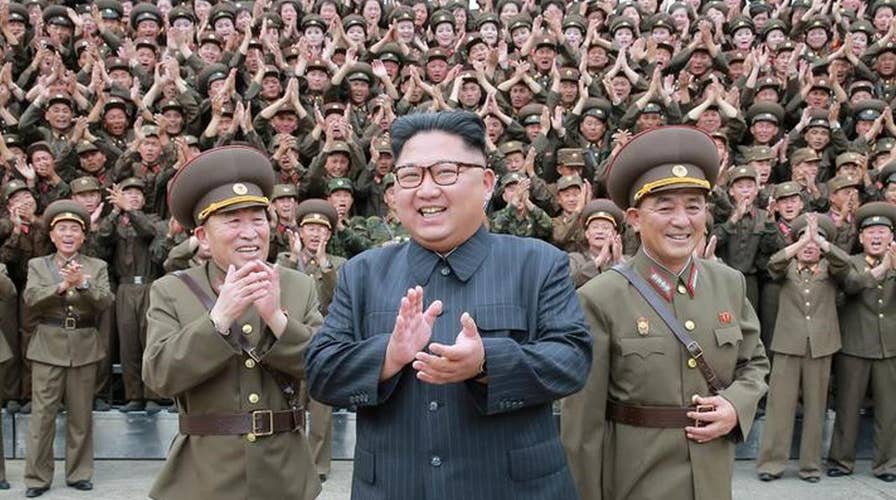Trump is ‘demanding action’ from North Korea: Lt. Col. Tony Shaffer
Lt. Col. Tony Shaffer (Ret.) of the London Center for Policy Research discusses President Trump’s trip to Asia and how he is handling the North Korean threat.
Kim Jong Un’s regime is pursuing an “aggressive schedule” to construct its first operational ballistic missile submarine, an analysis of satellite images indicated as North Korea scoffs at international condemnation and moves to complete its missile and nuclear program.
The images of Sinpo South Shipyard released on Thursday by 38 North, a project by the U.S.-Korea Institute at Johns Hopkins School of Advanced International Studies that specializes in North Korea analysis, suggested there were signs of movement and parts in the area since the start of the year. The shipyard has been notoriously known to be used to build large submarines for North Korea’s army, the analysis stated.
Several signs indicated the regime is expanding the site and working on a shipbuilding program to build and deploy a submarine capable of carrying a missile. The Nov. 5 satellite images showed “two larger circular objects” that could be used for a pressure hull on a submarine. Gantry and tower cranes have been seen moving around the facility, suggesting a “prolonged and ongoing shipbuilding program,” according to 38 North.
“The presence of what appear to be sections of a submarine’s pressure hull in the yards suggests construction of a new submarine, possibly the SINPO-C ballistic missile submarine — the follow-on to the current SINPO-class experimental ballistic missile submarine,” the 38 North report said.

Kim Jong Un was pictured with what appeared to be a nuclear device after its sixth nuclear test in September. (KCNA via Reuters)
An object spotted on the service tower appeared to be a launch canister support or launch canister, which wasn’t pictured in previous images of the shipyard area. It also replicates how a missile would be launched from a submarine’s hull. The report, however, said there are no indications a submarine-launched missile test will be conducted in the near future.
Though the images do not definitively show how much progress Kim’s scientists have made on building a ballistic missile submarine, North Korea has previously vowed to obtain a submarine capable of launching a long-range ballistic missile. State media released a propaganda video in late September depicting a submarine-launched missile striking the USS Carl Vinson.
Mark Fitzpatrick, a veteran arms control expert with the International Institute for Strategic Studies, told the BBC on Sunday the volatile regime has repeatedly surpassed expectations in developing its missile program.
"Up to now, North Korea has frequently surprised analysts and exceeded expectations in terms of the pace of its missile development,” Fitzpatrick told the BBC.
North Korea test-launched its first intercontinental ballistic missile in July, giving Kim the ability to strike Alaska for the first time in history. Its last intermediate-range missile launch in September, which flew over Japan, placed U.S. territory of Guam in range of a missile attack — a strike that Kim has previously threatened.

Intercontinental ballistic missile (ICBM) Hwasong-14 is pictured during its second test-fire in this undated picture provided by KCNA in Pyongyang on July 29. (Reuters)
Secretary of State Rex Tillerson on Friday called on African nations to isolate North Korea in an effort to suppress the regime’s missile and nuclear program. Speaking to African foreign ministers at the State Department, Tillerson said North Korea poses a threat to the world, not just Asia and the U.S. and that as such all countries have an obligation to reduce that threat.
"Let me stress that the United States seeks greater support from our African partners on growing global security matters, including North Korea," he said.
However, North Korea has clutched on to its nuclear program, vowing to complete its goal despite U.N. sanctions and international pressure as the crisis reaches a peak. President Trump, during his speech in South Korea, gave Kim a stern warning to “not underestimate” the U.S., to which North Korea’s state media responded: “[Trump’s threat] pushes us to speed up the effort to complete our nuclear force."
The Associated Press contributed to this report.





















